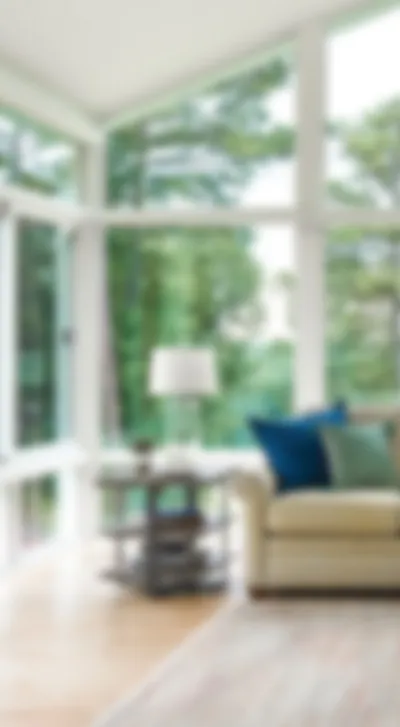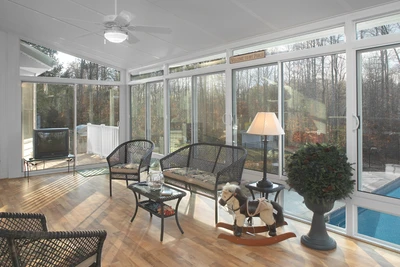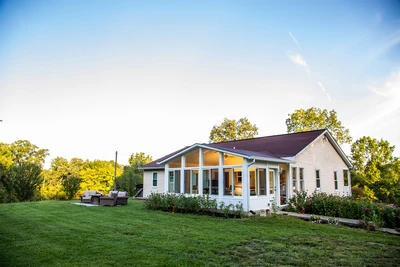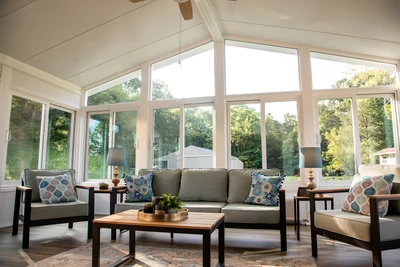


Expert Overview
- Three-season sunrooms are generally used spring through fall, whereas all-season sunrooms are used year-round.
- All-season sunrooms are more expensive, but add value to the home.
- Both three-season and all-season sunrooms can be constructed to match the look and style of the home.
You’re ready to install a sunroom. Fantastic! However, one of the first questions your contractor is likely to ask is, do you want to build an all-season (also called four-season) or a three-season sunroom?
These two types of sunrooms are similar in appearance, but function differently. In choosing the type that's right for you, you’ll need to consider your budget, the way you plan to use the room, and other factors.
What is a three-season sunroom?


The most popular type of sunroom, a three-season sunroom, is a room with many windows and screens. Often, the windows are single pane glass, which is not insulated.
A three-season sunroom is meant to be used for three out of the four seasons of the year—generally spring through fall—because it offers little protection against extreme temperatures like heat and cold. A three-season sunroom is ideal in mild climates where the winter is not very cold and the summer is not very hot. It’s perfect for entertaining, hosting birthday parties, and spending time basking in the beautiful days that spring, summer, and fall often bring.
These rooms usually lack built-in temperature control—although some homeowners may use a space heater to extend their use of the room into the colder parts of the year. Since a three-season sunroom is vulnerable to temperature extremes, you may not want to install features like a television, study desk, or play area, because of the room's limited functionality.
What is an all-season, or four-season, sunroom?


Like a three-season sunroom, an all-season sunroom is a room that consists of many windows. However, these are usually double or triple pane windows. Also, windows in an all-season sunroom are typically coated with Low-E coating, or are sometimes tinted. They may also be gas filled, which provides extra insulation.
Because of the insulated glass and extra coatings, the windows in an all-season sunroom allow little transfer from the inside to the outside, and vice-versa. You can easily heat and cool an all-season sunroom. This is why all-season sunrooms are used year-round.
All-season sunrooms are the most useful in climates where temperatures can be extreme, like in areas of the country with very cold winters and very hot summers.
You can use all-season sunrooms for additional living space like a family room, dining room or playroom for children. These rooms are often used for entertaining, like birthday parties and barbecues.
We often situate all-season sunrooms to look out onto a patio or deck, where homeowners can grill food, almost like an outdoor kitchen. On a hot summer day, an all-season sunroom can be a nice place to just sit comfortably in the air conditioning with a full view of the outdoors.
How construction differs for an all-season sunroom vs. a three-season sunroom
Sometimes, we construct a three-season from an existing covered porch or a patio without a cover. These rooms are sometimes called patio enclosures. Other times, we construct a three-season sunroom as an addition, and build from the ground up. Either way, to protect other living spaces in the home from the temperature fluctuations in a three-season sunroom, we always place a solid exterior entry door between the sunroom and the rest of the home.
Three-season sunrooms can be built to look like the rest of the home, featuring exterior siding, and a roof panel to match the home's exterior. Three-season sunrooms can also feature interior flooring, drywall, and utilize existing siding or brick, just like any other room. By working with a knowledgeable contractor, you can ensure that your three-season sunroom will look like a natural part of the house.
All-season sunrooms are typically a room addition, but can also be made from an existing porch. Like a three-season sunroom, all-season sunrooms have exterior siding and a roof panel to match the exterior of the home. Inside, the homeowner can decide to add their own flooring, and other design touches, just like any other room.
Pros and cons of three-season sunrooms
Pros:
- Less expensive to install than an all-season sunroom.
- Provides additional space for three seasons out of the year.
- Often warmer than being outside on cool days (because the glass traps heat).
- Windows can be opened for cool breezes to enter when it's warm.
- Excellent space for parties and fun events for much of the year.
Cons:
- Provides less value than an all-season sunroom.
- Cannot be used for some purposes because the space is not available all year-round.
- Temperature inside can be difficult to control.
Pros and cons of all-season sunrooms
Pros:
- Provides additional living, dining, and entertaining space all year-round.
- Heating and cooling of the space is relatively easy to control.
- Additional square footage adds value to the home.
- Excellent energy efficiency, constructed with high performing energy efficient windows.
Cons:
- More expensive to install than a three-season sunroom.


